
views
- Apply a pea-sized amount of fluoride toothpaste onto a soft-bristled toothbrush.
- Brush each tooth using short back-and-forth strokes or circular movements. Be sure to brush the front, back, and top of each tooth to remove plaque.
- Keep brushing for at least 2 minutes before spitting out the toothpaste. Rinse your mouth out with water or a fluoride mouthwash to finish.
Using the Proper Brushing Technique

Squeeze a pea-sized amount of toothpaste onto your toothbrush. Applying too much toothpaste can cause it to foam up in your mouth, which may tempt you to finish brushing too early. Plus, extra toothpaste increases the risk of accidentally swallowing it and ingesting fluoride, which can cause an upset stomach.
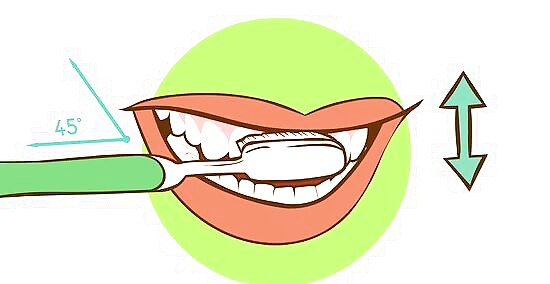
Brush your front teeth using circular movements. Position your toothbrush’s bristles on your gum line at a 45-degree angle. Gently brush with a short, circular motion to break up any plaque or residue that’s built up on the surface. Brush each tooth individually before moving on to the next one. Avoid brushing straight across your teeth from side-to-side and scrubbing too hard since you could damage your tooth enamel and cause your gums to recede.
Brush your molars with short back-and-forth strokes. Position the toothbrush so that it's perpendicular to your lips, or so that the bristles are resting on top of your bottom molars. Start on the molars furthest back in your mouth and work towards the front. Move the toothbrush with short in-and-out motions to clean them. Then, use small circular movements to loosen and eliminate bacteria on the surface. When you reach your front teeth, switch your brush to the other side of your mouth. Once you finish cleaning your bottom teeth, flip the toothbrush over and focus on your top molars. If brushing your teeth feels painful, try brushing more gently using only circular motions or switch to a toothpaste formulated for sensitive teeth. To access the outsides of your top molars, move your lower jaw to the side you are working on. This will help make more space inside of your mouth so you’re able to move your brush up and down instead of side-to-side.
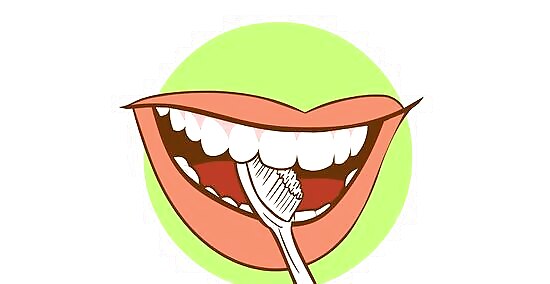
Clean the inner surfaces of your teeth by holding the brush vertically. Tip the toothbrush vertically so the head of the toothbrush points toward your gums. Use short up-and-down strokes on each tooth, working from the front to the back. Be sure that the bristles reach your gum line and break apart plaque stuck between your teeth. Dentists report that the most commonly skipped area is the inside of the lower front teeth, so be sure not to forget those! If you have trouble reaching the backs of your teeth, hold your mouth open so it’s about 2–3 finger-widths apart.
Brush your teeth for at least 2 minutes. Work your way around your mouth brushing a few teeth at a time. Divide your mouth into 4 quadrants: top left, top right, bottom left, and bottom right. Spend 30 seconds brushing the teeth in each quadrant before moving to the next one. When you finish, you’ll have spent 2 minutes on your brushing routine. If you’re having trouble keeping track of how long you’ve brushed your teeth, play a 2-minute song or a short video when you start. Keep brushing until the end of the song or video to ensure you clean your teeth thoroughly. EXPERT TIP Joseph Whitehouse, MA, DDS Joseph Whitehouse, MA, DDS Board Certified Dentist Dr. Joseph Whitehouse is a retired Board-Certified Dentist and the Former President of the World Congress on Minimally Invasive Dentistry (WCMID). Based in Castro Valley, California, Dr. Whitehouse was a dentist for 47 years. He has held fellowships with the International Congress of Oral Implantology and with the WCMID. Published over 20 times in medical journals, Dr. Whitehouse's research focused on mitigating fear and apprehension for patients associated with dental care. Dr. Whitehouse earned a DDS from the University of Iowa in 1970. He also earned an MA in Counseling Psychology from California State University Hayward in 1988. Joseph Whitehouse, MA, DDS Joseph Whitehouse, MA, DDS Board Certified Dentist Expert Trick: When you see a dentist, ask if they notice any problem areas the next time you have an appointment. Your dentist can give you specific advice about places you might be missing when you brush.
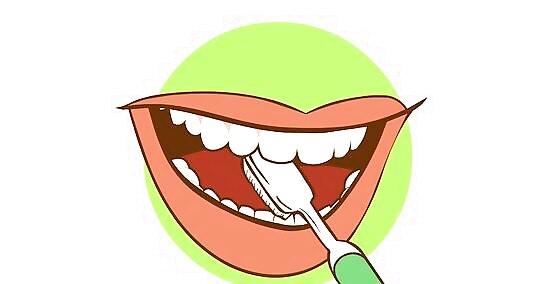
Finish up by brushing your tongue. After you've cleaned your teeth, gently rub the toothbrush bristles against your tongue. Don't press too hard, or you could damage the tissue on your tongue’s surface. Cleaning off your tongue gets rid of bacteria and helps keep bad breath away for longer. Some toothbrushes have plastic ridges or tongue scrapers built into the heads. Alternatively, use a tongue scraper.
Finishing Your Routine
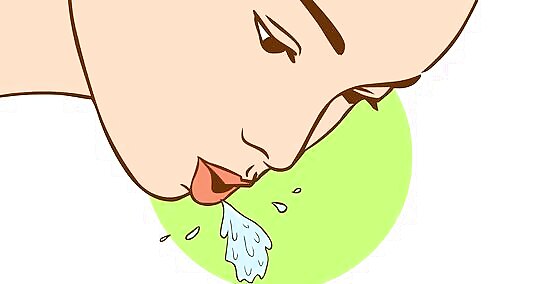
Rinse your mouth with clean water. Take a sip of water from a disposable cup, or cup your hands under the faucet. Swish the water around your mouth for a few seconds to get rid of the residual toothpaste, and then spit it out. There's some debate on whether or not rinsing after brushing is recommended. Some experts recommend leaving the residual toothpaste in your mouth so the fluoride continues working after you finish brushing. Other studies have shown that rinsing after brushing has no significant impact on the effectiveness of brushing with a fluoride toothpaste.
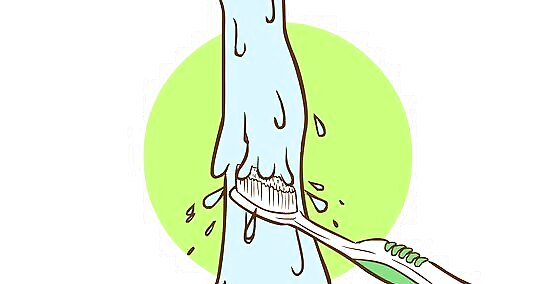
Rinse your toothbrush after each use. Hold your toothbrush under running water for a few seconds to remove any residual toothpaste and bacteria from the brush. Place your toothbrush upright when you’re finished so it has a chance to dry out. Otherwise, bacteria may form. If you don't rinse the toothbrush properly, you may introduce old bacteria into your mouth the next time you use it.
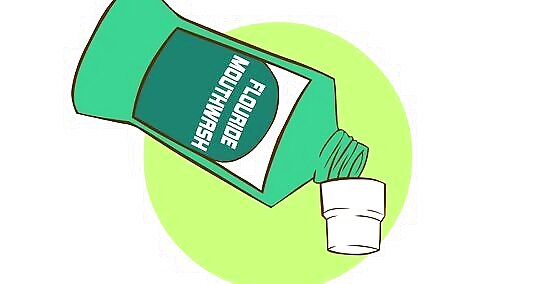
Finish with a fluoride mouthwash to prevent tooth decay. Take a small sip of mouthwash, swish it in your mouth for about 30 seconds, and spit it out. Be careful not to swallow any since it contains fluoride. Some experts recommend waiting to use mouthwash until 30 minutes or longer after brushing your teeth so you don’t get rid of leftover toothpaste in your mouth. Using mouthwash is a good alternative if you don’t have enough time to fully brush your teeth, like after a meal in the middle of the day.
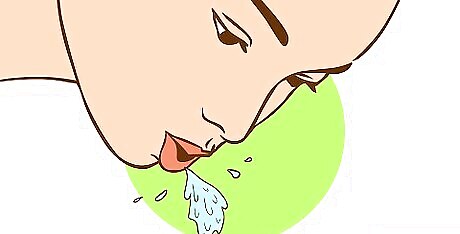
Rinse your mouth with salt water to kill bacteria. Take a small sip of salt water and swish it between your teeth. As you gargle the salt water, it will help flush bacteria from between your teeth so any small oral wounds or sores can heal faster.
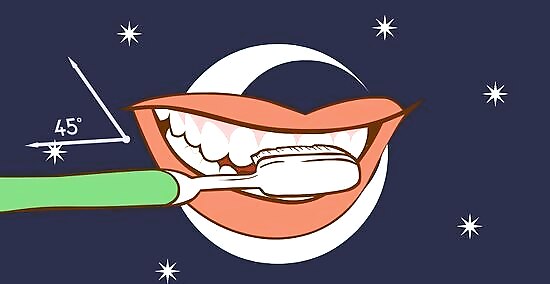
Brush your teeth at least twice a day. Get into the routine of brushing your teeth once in the morning and once before bed. If you’re able to, try fitting in a third time to brush your teeth in the middle of the day to help maintain your fresh breath and your oral health. Try to avoid snacking between meals as much as possible, as this results in more food debris and bacteria building up in the mouth.
Using the Right Tools
Choose a soft-bristled toothbrush. Toothbrushes with soft nylon bristles work the best for removing plaque and cleaning debris off of your teeth. Make sure the toothbrush fits comfortably in your hand, and has a head small enough to easily reach all of your teeth, especially the ones at the back. If you have difficulty fitting the toothbrush into your mouth, then it’s probably too big for you. Hard-bristled brushes can irritate your gums or scrub away tooth enamel if you apply too much pressure. Electric toothbrushes are a great choice since they vibrate to break up more plaque and usually have built-in timers so you brush for the proper amount of time. However, a manual toothbrush works just as well. Avoid toothbrushes with natural bristles made from animal hair because these can harbor bacteria and must be replaced more frequently.

Replace your toothbrush every 3–4 months. Over time, your toothbrush’s bristles wear out, which makes them lose their flexibility and effectiveness. Get a new toothbrush as soon as the bristles start to splay and lose their shape. Old toothbrushes may also be home to thousands of microbes that can cause oral infections if you use them. Some toothbrushes have handles or bristles that change color when it's time to purchase a new one.
Opt for a fluoride toothpaste. Fluoride in your toothpaste not only helps remove plaque, but also helps strengthen tooth enamel. For adults and children 6 and older, choose toothpaste that has 1,350–1,500 parts per million (ppm) of fluoride. For children between 3–6, use a lower-strength toothpaste with 1,000 ppm instead. For kids under the age of 3, stick to a fluoride-free toothpaste instead. If kids are using fluoride toothpaste, supervise them while they brush their teeth. Fluoride in high doses can be toxic, so don’t allow them to swallow any. There are multiple kinds of toothpaste that target a wide variety of dental and gum problems, including preventing cavities, controlling tartar, protecting sensitive teeth and gums, and removing surface stains. Opt for the one that suits your best or ask your dentist to see what they recommend.
Use dental floss every day before you brush. Flossing your teeth is just as important as brushing because it removes built-up plaque, bacteria, and food particles that get trapped between the teeth. Try flossing before brushing your teeth so that you’re able to brush away any food or bacteria that comes loose. Just break off a piece of floss about 1 foot (30 cm) long and gently work it between your teeth. Make the floss into a C-shape so it hugs the side of your tooth to remove plaque. Avoid snapping the floss between the teeth as this can irritate sensitive gums. If you find dental floss awkward to use or if you have braces, look for dental picks instead. These small wooden or plastic sticks fit between teeth and are easier to hold than floss. Alternatively, use flossers, which are small pieces of floss strung between 2 supports, generally with a pick at the opposite end.


















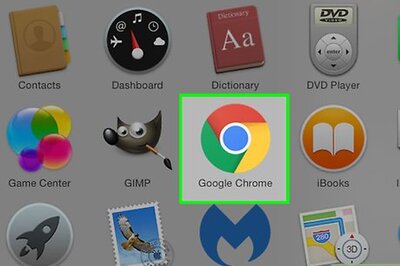

Comments
0 comment